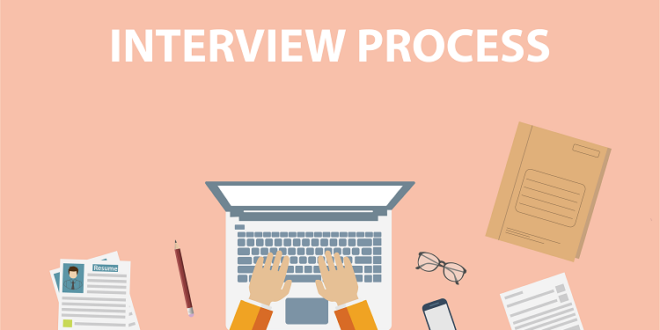HR leaders face significant obstacles in their attempt to make smart people decisions. For years, they’ve had no choice but to gather data from multiple spreadsheets in the hope of determining the metrics of employee engagement, gender pay equity, and turnover rates in essential jobs. The process is time-intensive, and it leaves plenty of room for mistakes.
However, cloud-based analytics tools have been revolutionary in the HR world. They let HR leaders take advantage of people’s data effectively and in time. The tools make it possible to make smart business decisions without wasting much time.
Analytics Software for the HR Industry
A well-optimized HR management team has a positive impact on the entire business’ performance. HR analytics software makes it possible to continuously add value to your business.
HR analytics software helps your team track data around workforce costs, performance, labor needs, and attendance. With the help of the software, you can predict future trends and hire the right people when appropriate.
With association management software, you can get the necessary features to run your organization. The best association management software promotes organizational leadership. With efficient management solutions, you can promote consistent communication within the company. Association software offers the features and capabilities you need for event organization, member database management, and more.
How People Analytics Help HR Function
In order to make better business decisions, HR functions have to go from metrics to insights. Here are a few ways that people analytics can make a difference in HR function.
1. Recruitment
In addition to Operational Reporting, data-driven recruiting that is backed by Machine Learning (ML) and Artificial Intelligence (AI) can improve your hiring metrics. This includes cost to hire, time to hire, and the quality of your hires.
It can streamline your recruitment costs by determining the most effective channel or source for targeting high-quality candidates. This may include career pages, social media sites, and job portals. Without the right source or channel, you might waste a lot of time and resources on the wrong one.
It can help predict the future performance of candidates based on their assessment scores, past credentials, and assessment scores. By using data points like experience, skillset, recommendations, and social media posts, you can predict the turnover rates of passive candidates.
You can improve your brand as an employer through digital assistance in the form of chatbots. They answer FAQs about your company and available job roles, hence reducing your application drop rate. ML algorithms based on data points promote automated sourcing, ranking, and matching of candidates.
2. Continuous Engagement, Performance Management, and Retention
With real-time data analytics, you can continuously evaluate the performance of employees. This way, managers can continuously give their employees feedback. They can identify skill gaps and promote career growth where necessary.
Employees’ engagement level is determined by leveraging the data from employee engagement and satisfaction surveys. Performance ratings and turnover rates are important as well.
Attrition is predictable by correlating with age, performance rating, compensation, the period since last promotion, and other data points. You can determine why employees may be leaving, and why they are likely to leave.
Some data points can be used to determine the cause of employee turnover. You can then take corrective action to retain your talent.
3. Development and Learning
With the growing demand for agile workforces, many organizations are putting a lot of effort into improving their employees’ capability. A lot of emphasis has been put into digital learning, LMS, and other AI tools.
With people analytics, you can recommend personalized training programs that are based on career paths, skill gaps, cross-functional skilling, or upskilling.
The amount of time employees spend on learning management systems (LMS) can show their level of engagement in different courses or programs. It can help determine the courses and programs that are most valuable to your employees.
Management can consistently evaluate the quality of learning content that employees use. This is apparent through test scores, completion rate, employee feedback, and the number of attendees. The management can also access employees’ preferred modes of delivery. Learning data helps you ensure that employees are getting the most from their learning experience.
4. Future Casting
One of the most valuable benefits of HR analytics is that it helps you predict the future. It models changes that your business could experience in the coming years. With people analytics, you can determine the effect of talent hiring. In addition, you can predict retention and engagement.
The predictions help in resource allocation. Analytics help you determine the revenue/expense per employee and cost per hire. Data analysis helps redefine your hiring and retention plans. Identify patterns and use them to make decisions.
Challenges and Opportunities for Analytics
Even with the best analytics software, remember that access is just the first step. You must do more to leverage data, and boost your company practices and policies. The real test of analytics is turning insight into tangible changes that deliver business value.
The most difficult part of people analytics is putting the recommended changes in practice. This is why every company needs a competent team of HR professionals.
The shift towards HR analytics is expected to continue over the years. Analytics will continue playing a significant role in talent acquisition, operations, and development. HR teams have plenty of opportunities to take advantage of the software and maximize ROI.
Consider investing in integrated analytics capabilities to optimize employee performance and human capital. Recruiting has become more competitive than ever. If you cannot adapt, you may have trouble attracting and retaining top talent. Even though HR professionals will always be at the center of the management team, it doesn’t hurt to take advantage of technology.
Conclusion
The world of human relations is complicated. HR leaders can have a hard time making smart decisions based on analytics. With the right software, however, things are a lot easier. People analytics software helps HR teams gather, analyze, and co-relate important data. Using people data successfully requires the right software and a team that is willing to implement the suggested changes. HR teams must be able to take the required steps using data insights.
 HammBurg Be informed with latest news, reviews, entertainment, lifestyle tips, and much more.
HammBurg Be informed with latest news, reviews, entertainment, lifestyle tips, and much more.




